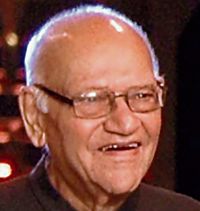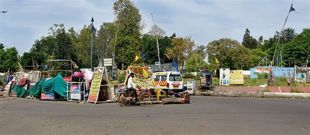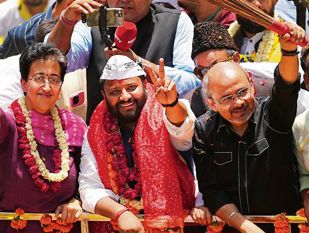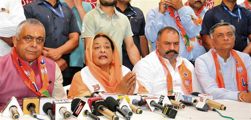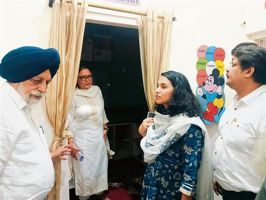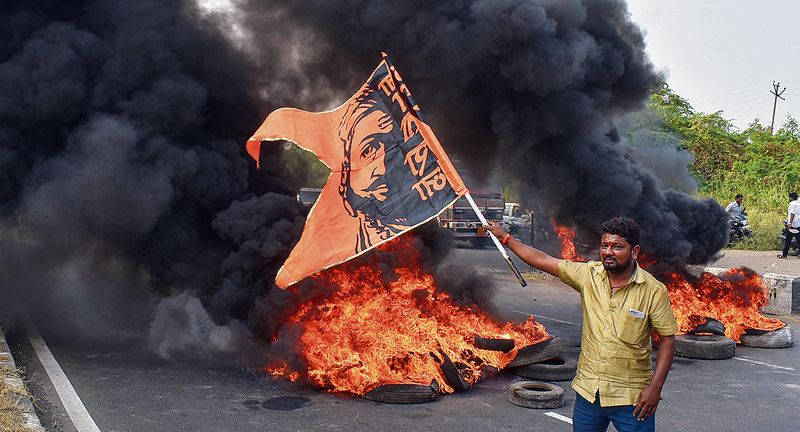
On the warpath: The Marathas are numerically significant in electoral terms. PTI
THE Marathas constitute one-third of the population of Maharashtra. They are agriculturists corresponding to the Jats of Punjab, Patels of Gujarat or Reddys of Andhra Pradesh. Political power has been vested in agricultural communities since Independence because of the ‘one man, one vote’ principle. Sheer numbers, helped by the dominance of big landholders who belonged to these communities, ensured that political power remained largely in their hands.
The state government is examining the possibility of including Marathas in the OBC list to make them automatically eligible for the nirvana of reservation.
The big Jat families of Punjab paid the required attention to education. This facilitated their entry into the higher echelons of the administration and the armed forces. So did the Patels and Reddys. That same enthusiasm for learning was not seen in Maharashtra. That aspect of human development was left to the Brahmins.
Shahu Maharaj, grandson of the great warrior-king Shivaji Maharaj, relied on the Peshwas, who were of Brahmin stock, to administer his territories. A system developed which in the changed socio-economic dynamics of the times is under siege.
Surplus to agriculture, young men in rural Maharashtra gravitated to the Army. The Maratha Light Infantry’s regimental headquarters in Belgaum (now in Karnataka) was their destination. The number of young men not required on the farms has increased exponentially over the years. Aspirations have also grown.
Unemployment is easily the biggest problem facing the rural youth, not only in Maharashtra but across the land. The demand for reservation in government jobs and admission to institutions of higher education is a natural corollary of this stage of development. Reservation in government jobs for the Scheduled Castes (SCs) and Scheduled Tribes (STs) was ordained in our Constitution. It was meant to address age-old injustices which were concomitant to the varna system in the social order.
Many years later, then PM VP Singh decided to implement the Mandal Commission report that extended the reservation to the Backward Classes other than the SCs and STs. The SCs had been accorded 12.5 per cent quota and the STs 7.5 per cent; so, 20 per cent of the government jobs went to these two categories of citizens. The commission’s recommendations mandated another percentage, higher than 20, to the OBCs, according to their numbers. The objections raised by the educationally advanced castes were heard by the Supreme Court, which fixed the upper ceiling for reserved seats at 50 per cent, leaving the remaining jobs for those competing on merit. It is this 50 per cent ceiling that is being challenged by new demands made by even politically powerful communities like the Marathas in Maharashtra and the Patels in Gujarat, confounding decision-makers.
The governments in Maharashtra and at the Centre will find it embarrassing and tricky to deal with the Maratha demand. The Lok Sabha elections are just six months away. The Marathas are numerically significant in electoral terms. A relatively unknown leader, Manoj Jarange-Patil, had undertaken a fast-unto-death, demanding an assurance on reservation for Marathas in institutions of higher learning and in government jobs. He had announced a date by which the government had to concede his demand. Chief Minister Eknath Shinde, accompanied by one of his two Deputy CMs, Devendra Fadnavis of the BJP, and two retired judges of the Bombay High Court, met him and convinced him to give the government time to find a way out of an impossible situation.
The CM announced that the decision on Maratha reservation would be taken by January 2, 2024. Jarange-Patil said the date he had agreed to is December 24, 2023. He was putting the proverbial gun to the government’s head.
The state government is examining the possibility of including Marathas in the OBC list to make them automatically eligible for the nirvana of reservation. The share in the pie will then diminish for existing stakeholders, who are sure to object.
The government will have to find avenues to adjust the Marathas in the traditionally lower category of Kunbis. This category, which includes small landholders and also landless labour, commonly overlaps the Marathas as a category. In Marathwada, which had five Marathi-speaking districts in the Nizam’s territory that were included in Maharashtra after states were formed on a linguistic basis, there was no mention of Marathas in the official records. All were listed as Kunbis. Incidentally, in Goa also, I had not heard the word ‘Marathas’ mentioned. Kunbis, on the other hand, were traditionally recognised.
When Chhatrapati Shivaji Maharaj was to be crowned king, local Brahmins declined to crown him on the ground that he was not a Kshatriya. A Brahmin from Benares had to be traced to do the honours. That Brahmin declared that Shivaji was a Kshatriya of the Sisodia clan of the Rajputs from Mewar and anointed him king. From that time, a category of Kshatriyas called Marathas came into being. They were warriors in Shivaji’s army. A few of them were included in the ‘Shanav Kulee’ (96 families) depending on their status as an officer or a soldier.
Even today, Maharashtrians with whom I interact are not able to explain clearly the difference between Maratha and Kunbi. The latter are favoured in the reservation list. The former would have liked to be classified as Kshatriyas, warriors by profession, eligible for a higher social standing. The socioeconomic situation today, the acute agrarian distress and unemployment tempt some Marathas to claim OBC status as Kunbis to make them eligible for reservation rather than bask in the higher-caste Kshatriya’s halo.
The double-engine government in Maharashtra has begun the process of classifying Marathas in Marathwada as Kunbis. That is easier to achieve in the Nizam’s erstwhile territory because all Marathas had been classified as Kunbis under his rule. How that will be accepted in western Maharashtra is a 64-dollar question. Pride may deter many young men from claiming a lower status in the social order.
The Maratha demand has gathered momentum in the run-up to the Lok Sabha elections. This is a type of extortion that political parties indulge in. The consequences of a surrender will open a Pandora’s box.
Join Whatsapp Channel of The Tribune for latest updates.






